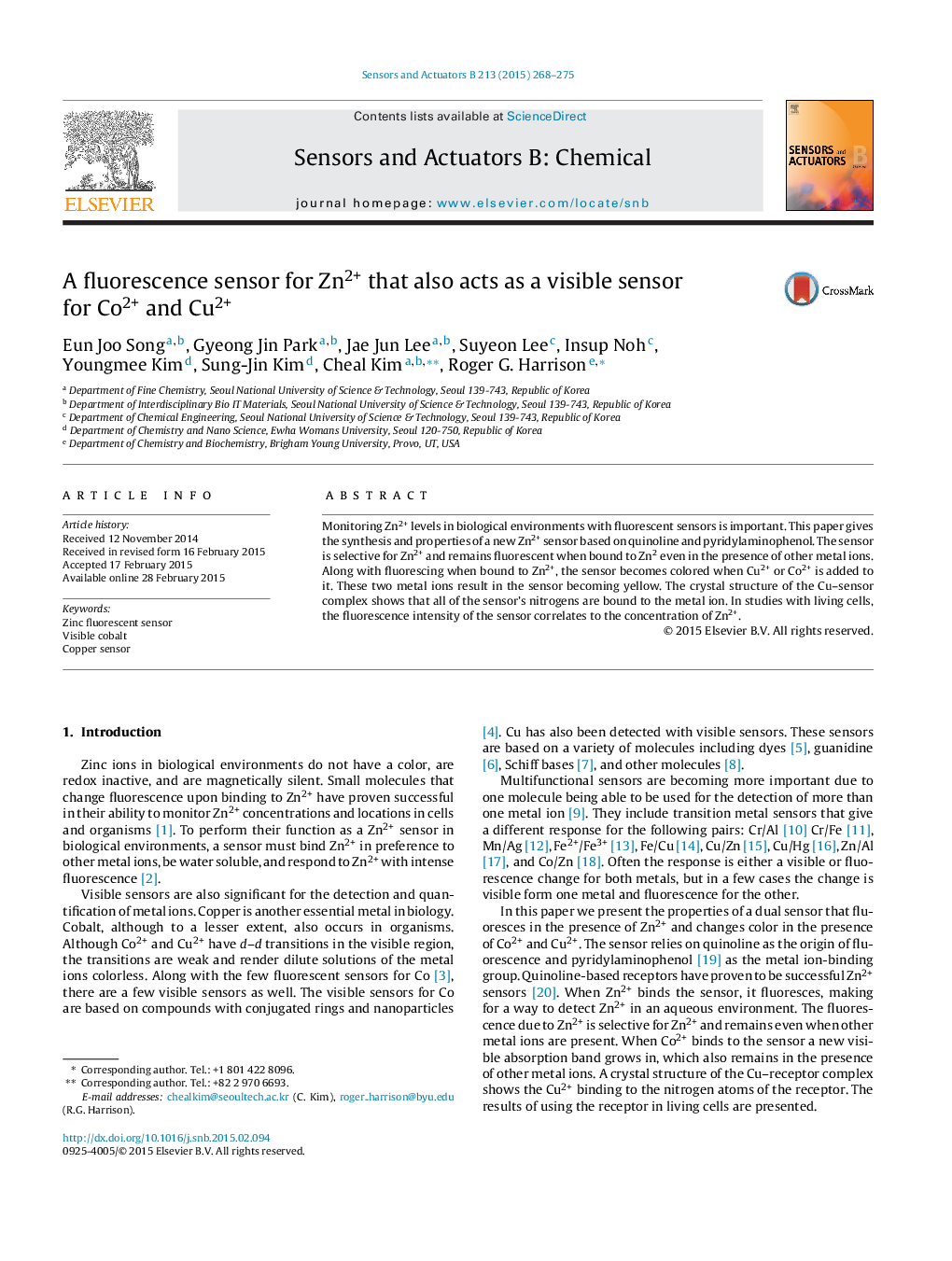| Article ID | Journal | Published Year | Pages | File Type |
|---|---|---|---|---|
| 750672 | Sensors and Actuators B: Chemical | 2015 | 8 Pages |
Monitoring Zn2+ levels in biological environments with fluorescent sensors is important. This paper gives the synthesis and properties of a new Zn2+ sensor based on quinoline and pyridylaminophenol. The sensor is selective for Zn2+ and remains fluorescent when bound to Zn2 even in the presence of other metal ions. Along with fluorescing when bound to Zn2+, the sensor becomes colored when Cu2+ or Co2+ is added to it. These two metal ions result in the sensor becoming yellow. The crystal structure of the Cu–sensor complex shows that all of the sensor's nitrogens are bound to the metal ion. In studies with living cells, the fluorescence intensity of the sensor correlates to the concentration of Zn2+.
Graphical abstractThe quinoline-based sensor selectively fluoresces with Zn2+ and turns yellow in the presence of Co2+ and Cu2+.Figure optionsDownload full-size imageDownload as PowerPoint slide
